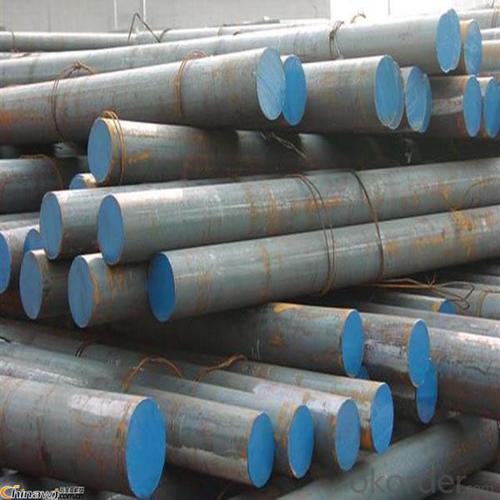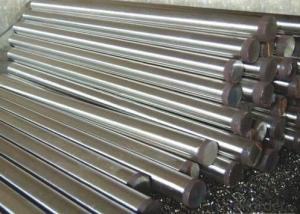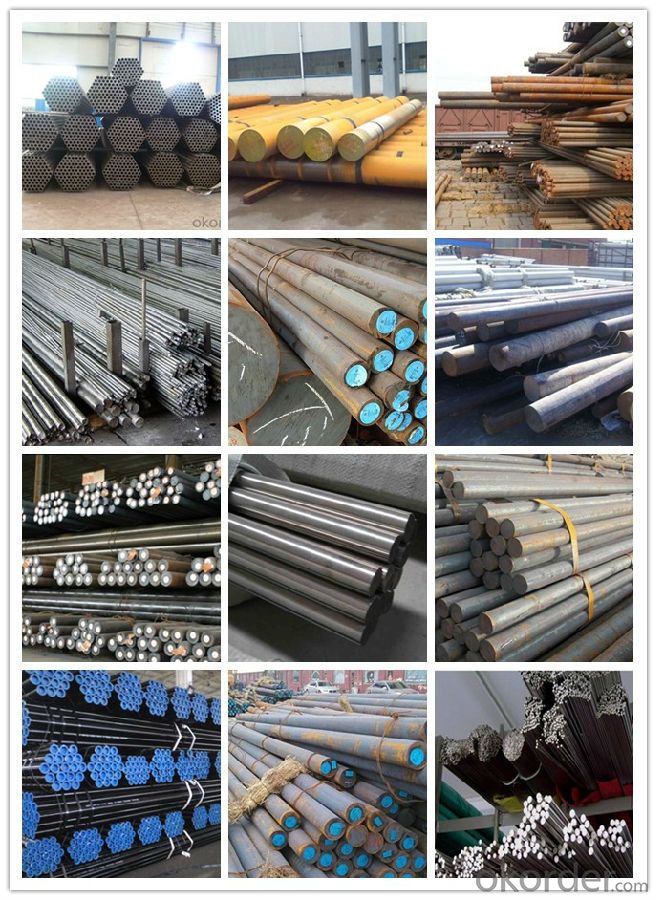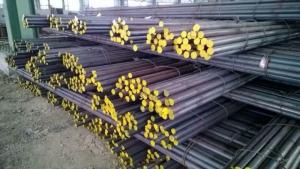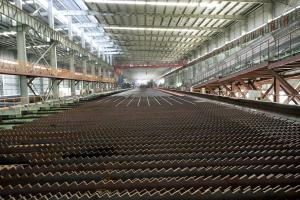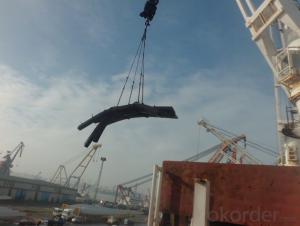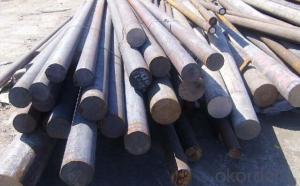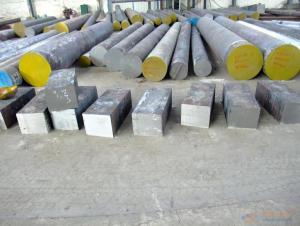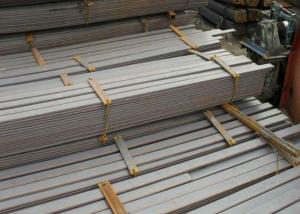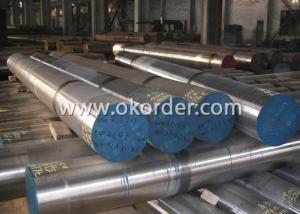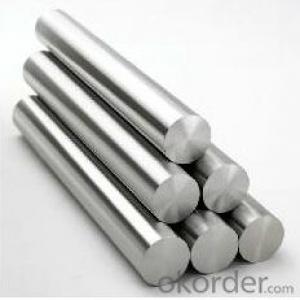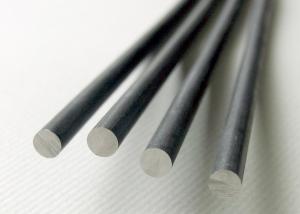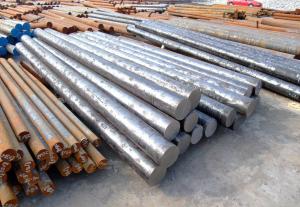Special Steel Hot-Rolled 15CrMo Steel Round Bar
- Loading Port:
- China main port
- Payment Terms:
- TT OR LC
- Min Order Qty:
- 30 m.t.
- Supply Capability:
- 10000 m.t./month
OKorder Service Pledge
OKorder Financial Service
You Might Also Like
Specification
Hot rolled 15CrMO steel round bar
other material available | Carbon and alloy: Cr-Mo alloy, Cr-Ni alloy, Cr-Mn alloy, Si-Mn alloy |
Dia.: | 10mm~1200mm |
Length: | Random or fixed as required |
Standard | GB,ASTM,JIS,BS |
Out Side Coating | Bare outside |
Ends | Plain ends with color painting |
Packing | Loose bundle |
Delivery | By container/train/lorry |
Third Party Inspection | SGS/BV/LORDS |
Delivery time | 7 days Min. |
Product show
Workshop show
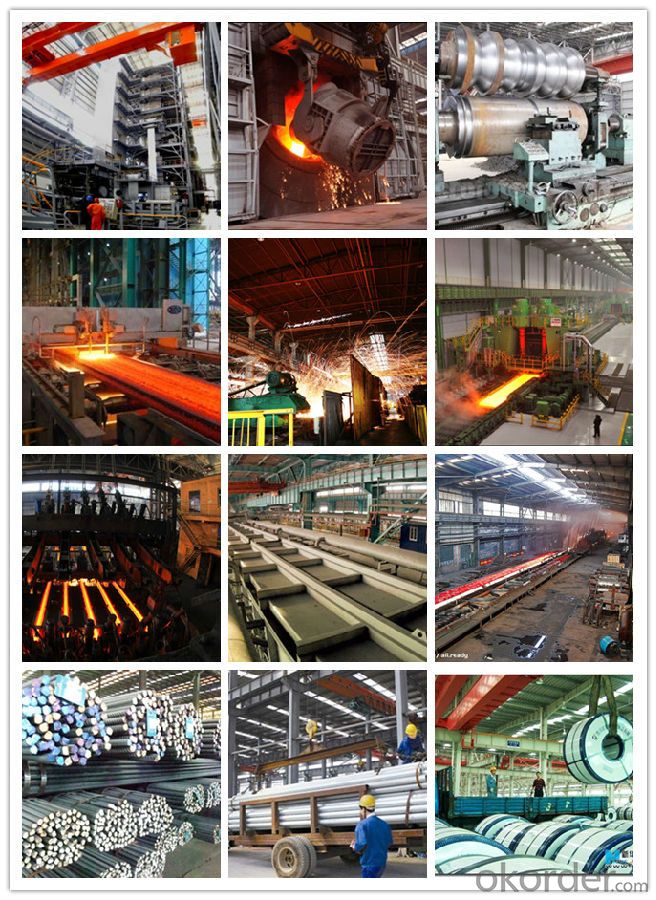
Shipping
1. FedEx/DHL/UPS/TNT for samples, Door-to-Door;
2. By Air or by Sea for batch goods, for FCL; Airport/ Port receiving;
3. Customers specifying freight forwarders or negotiable shipping methods!
Delivery Time: 3-7 days for samples; 5-25 days for batch goods.
Payment Terms
1.Payment: T/T, L/C, Western Union, MoneyGram,PayPal; 30% deposits; 70% balance before delivery.
2.MOQ: 1pcs
3.Warranty : 3 years
4.Package Informations: 1) EXPORT, In 20 feet (GW 25 ton) or 40 feet Container (GW 25 ton)
2)as customer's requirement
Why choose us?
(1) The leading exporter in China special steel industry.
(2) Large stocks for various sizes, fast delivery date.
(3) Good business relationship with China famous factories.
(4) More than 7 years steel exporting experience.
(5) Good after-sales service guarantee.
- Q: What are the properties of precipitation-hardening steel?
- Precipitation-hardening steel, also known as PH steel, possesses several notable properties. One of its key features is its ability to be strengthened through a heat treatment process, known as precipitation hardening. This process involves heating the steel to a specific temperature and then rapidly cooling it, followed by aging at a lower temperature. This treatment causes the formation of fine particles within the steel, leading to increased strength and hardness. Another important property of precipitation-hardening steel is its excellent combination of strength and corrosion resistance. This steel alloy is often used in applications where both high strength and resistance to corrosion are required, such as in aerospace and marine industries. Additionally, precipitation-hardening steel offers good weldability, making it suitable for various fabrication processes. Furthermore, this type of steel is known for its versatility as it can be tailored to meet specific mechanical properties by adjusting the heat treatment parameters. This allows manufacturers to customize the steel's strength, toughness, and other characteristics according to the desired application. In summary, precipitation-hardening steel is characterized by its ability to be strengthened through a heat treatment process, its excellent combination of strength and corrosion resistance, and its versatility in achieving desired mechanical properties.
- Q: How does special steel perform in extreme heat conditions?
- Special steel performs exceptionally well in extreme heat conditions. It has excellent heat resistance properties, enabling it to maintain its strength and structural integrity even at high temperatures. This makes it highly suitable for applications that involve exposure to extreme heat, such as in industrial furnaces, jet engines, and power plants. Its ability to resist thermal deformation and retain its mechanical properties ensures optimal performance and safety in such demanding environments.
- Q: How does special steel contribute to the tool manufacturing industry?
- The tool manufacturing industry greatly relies on special steel, as it offers numerous benefits that enhance the quality, performance, and durability of tools. First and foremost, special steel is widely recognized for its exceptional strength and toughness, making it an ideal choice for producing top-notch tools that can endure heavy usage and extreme conditions. Furthermore, special steel boasts excellent wear resistance. Tools crafted from special steel can maintain their sharpness and cutting edge for extended periods, reducing the need for frequent sharpening or replacement. This not only saves time and effort but also boosts productivity in industries heavily reliant on tools, such as construction, automotive, and aerospace. Additionally, special steel can be heat-treated to achieve specific properties, including hardness, which is crucial for tools like drills, saws, and blades. This heat treatment process enables manufacturers to tailor the characteristics of the steel to meet the unique requirements of different tools, ensuring optimal performance and effectiveness. Moreover, special steel provides corrosion resistance, a vital feature for tools exposed to moisture, chemicals, or harsh environments. By preventing rust and corrosion, special steel helps prolong the lifespan of tools, reducing maintenance costs and ensuring consistent performance over time. Furthermore, the versatility of special steel allows manufacturers to create tools with intricate shapes and designs. This flexibility opens up possibilities for innovation and the development of specialized tools catering to specific applications and industries. Special steel can be easily machined, welded, and formed into various tool designs, enabling manufacturers to produce efficient and ergonomic tools that offer improved handling and user comfort. In conclusion, special steel plays a significant role in the tool manufacturing industry by providing strength, wear resistance, heat treatability, corrosion resistance, and versatility. These properties facilitate the production of high-quality tools that are durable, reliable, and efficient, meeting the demands of diverse industries and enhancing productivity.
- Q: What are the different non-destructive testing methods for special steel?
- Special steel materials can be evaluated using a variety of non-destructive testing methods. These methods are specifically designed to identify flaws or defects in the steel without causing any harm to the material itself. There are several commonly used non-destructive testing methods for special steel: 1. Ultrasonic Testing (UT): UT utilizes high-frequency sound waves to detect internal flaws or defects in the steel. By directing ultrasonic waves into the material and analyzing the reflected waves, any cracks, voids, or inclusions can be identified. 2. Magnetic Particle Testing (MT): MT is primarily used to identify surface defects in steel. By applying a magnetic field to the material and iron particles to the surface, any present defects will cause the particles to cluster around them, making them visible for inspection. 3. Liquid Penetrant Testing (PT): PT is a widely used method to detect surface defects in special steel. This technique involves applying a liquid dye to the steel surface and removing excess dye after a certain amount of time. By then applying a developer, any dye drawn out of defects becomes visible for inspection. 4. Radiographic Testing (RT): RT utilizes X-rays or gamma rays to examine the internal structure of special steel. The steel is exposed to radiation, and the resulting image is captured on a radiographic film or digital detector. This method is highly effective in detecting internal defects such as porosity, inclusions, or cracks. 5. Eddy Current Testing (ECT): ECT is primarily used for surface inspection of special steel. It involves passing an electrical current through a coil, generating a magnetic field. Any variations in the magnetic field caused by defects on the surface of the steel can be detected and analyzed. These non-destructive testing methods provide valuable information about the quality and integrity of special steel materials without causing any damage. By implementing these techniques, manufacturers and engineers can ensure that the steel meets required standards and specifications, ultimately enhancing safety and reliability in various applications.
- Q: How does special steel withstand extreme temperatures?
- Special steel is able to withstand extreme temperatures due to its unique composition and production process. One key factor is the addition of alloying elements such as chromium, molybdenum, and nickel, which enhance the steel's heat resistance. These elements form stable oxides on the surface of the steel, creating a protective barrier against oxidation and corrosion at high temperatures. Furthermore, special steel undergoes specialized heat treatment methods like quenching and tempering, which refine its microstructure and improve its mechanical properties. This process enhances the steel's ability to maintain its strength and hardness even when exposed to extreme temperatures. Additionally, the manufacturing process of special steel involves precision and control over the cooling rate during its production. This controlled cooling prevents the formation of brittle phases, ensuring that the steel retains its toughness and ductility at both high and low temperatures. Moreover, the grain size of special steel is carefully controlled through techniques like grain refinement, which leads to a more homogeneous and fine-grained microstructure. This fine-grained structure enhances the steel's resistance to thermal fatigue and creep, allowing it to withstand prolonged exposure to extreme temperatures without significant degradation. Overall, the combination of alloying elements, specialized heat treatment processes, controlled cooling, and refined microstructure makes special steel highly capable of withstanding extreme temperatures while maintaining its structural integrity and mechanical properties.
- Q: What are the different heat treatment methods for special steel?
- There are several heat treatment methods for special steel, including annealing, quenching, tempering, and normalizing. Annealing involves heating the steel to a specific temperature and then slowly cooling it to improve its machinability and reduce internal stresses. Quenching is a rapid cooling process that makes the steel harder and more brittle, but also increases its strength. Tempering is a heat treatment process that involves reheating quenched steel to a specific temperature and then cooling it again to improve its toughness and reduce brittleness. Normalizing is another heat treatment method that involves heating the steel to a specific temperature and then cooling it in still air to improve its mechanical properties and refine its grain structure.
- Q: What are the common challenges in heat treatment of special steel?
- To achieve the desired material properties, careful attention must be given to several challenges encountered in the heat treatment of special steel. One primary challenge revolves around the necessity for meticulous temperature control throughout the heating and cooling stages. Special steels typically have specific temperature ranges for heat treatment that must be strictly adhered to in order to attain the desired microstructure and mechanical properties. Failing to maintain precise temperature control can result in inadequate or inconsistent heat treatment, ultimately leading to suboptimal material performance. Another challenge lies in the potential distortion or warping of the steel components during the heat treatment process. Special steels often possess intricate designs or complex shapes, making them more susceptible to distortion when subjected to high temperatures. This distortion can have adverse effects on the overall quality and dimensional accuracy of the final product. Consequently, careful consideration must be given to the selection of suitable heating and cooling methods, as well as the utilization of fixtures or jigs to minimize distortion. Moreover, special steels may contain alloying elements that significantly influence the heat treatment process. Elements like chromium, molybdenum, or vanadium can alter the steel's hardenability, tempering response, or transformation behavior. Their presence can introduce additional challenges when determining the optimal heat treatment parameters, necessitating adjustments to heating and cooling rates, soak times, or quenching media. Lastly, achieving uniformity in heat treatment across a batch of special steel components can prove to be challenging. Variations in size, shape, or composition within a batch can result in inconsistent heat treatment outcomes. Controlling the heating and cooling rates, ensuring proper circulation of the heat treatment media, and implementing effective process monitoring techniques are essential in achieving consistent and uniform material properties. In conclusion, the heat treatment of special steel encompasses challenges such as precise temperature control, distortion/warping, the influence of alloying elements, and achieving uniformity across a batch. Successfully addressing these challenges requires a comprehensive understanding of the steel's composition, meticulous process planning, and the utilization of appropriate process controls and monitoring techniques.
- Q: How is special steel used in the marine industry?
- Special steel is used in the marine industry for various applications such as building ship hulls, constructing offshore platforms, manufacturing propeller shafts, and fabricating marine equipment. Its high strength, corrosion resistance, and durability make it ideal for withstanding harsh marine environments and ensuring the safety and reliability of marine structures and components.
- Q: How does special steel perform in high-temperature mechanical fatigue conditions?
- Special steel, such as heat-resistant or high-temperature steel alloys, is specifically designed to excel in high-temperature mechanical fatigue conditions. It demonstrates superior resistance to thermal expansion, corrosion, and oxidation, allowing it to maintain its structural integrity and mechanical properties even at elevated temperatures. This type of steel exhibits excellent strength, toughness, and creep resistance under prolonged cyclic loading, making it a reliable material for applications in high-temperature mechanical fatigue conditions.
- Q: What are the different methods of preventing stress corrosion cracking in special steel?
- There are several methods that can be employed to prevent stress corrosion cracking in special steel: 1. Material Selection: Choosing the appropriate steel alloy with enhanced resistance to stress corrosion cracking is crucial. Alloys such as stainless steel, duplex stainless steel, and nickel-based alloys are known for their resistance to this type of corrosion. 2. Surface Treatments: Applying surface treatments like passivation or electroplating can create a protective layer on the steel surface, preventing the entry of corrosive substances and reducing the likelihood of stress corrosion cracking. 3. Stress Relieving: Heat treatment processes like stress relieving can be employed to reduce residual stresses in the steel, which can contribute to stress corrosion cracking. This treatment involves heating the steel to a specific temperature and then slowly cooling it, which helps to minimize the presence of residual stresses. 4. Corrosion Inhibitors: The use of corrosion inhibitors can help to protect the steel from corrosive environments. These inhibitors can be added to the system or applied as a coating on the steel surface, creating a barrier that prevents the corrosive substances from reaching the steel. 5. Environmental Control: Controlling the environment in which the steel is exposed is essential for preventing stress corrosion cracking. Factors such as temperature, humidity, and the presence of corrosive substances should be monitored and controlled to minimize the risk of stress corrosion cracking. 6. Cathodic Protection: Utilizing cathodic protection techniques can help to prevent stress corrosion cracking. This method involves applying a sacrificial or impressed current to the steel, which acts as a cathode and protects the steel from corrosion. 7. Design Considerations: Proper design of the steel structure is crucial in preventing stress corrosion cracking. Factors such as avoiding sharp corners, minimizing stress concentrations, and providing adequate drainage to prevent the accumulation of corrosive substances can significantly reduce the risk of stress corrosion cracking. By employing a combination of these methods, it is possible to effectively prevent stress corrosion cracking in special steel and ensure the longevity and integrity of the structure.
Send your message to us
Special Steel Hot-Rolled 15CrMo Steel Round Bar
- Loading Port:
- China main port
- Payment Terms:
- TT OR LC
- Min Order Qty:
- 30 m.t.
- Supply Capability:
- 10000 m.t./month
OKorder Service Pledge
OKorder Financial Service
Similar products
Hot products
Hot Searches
Related keywords



